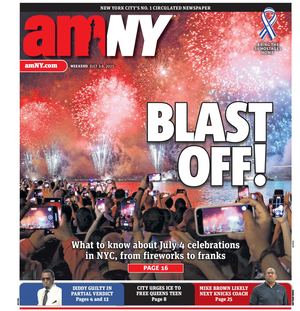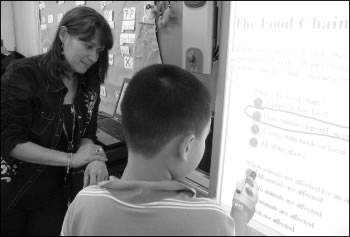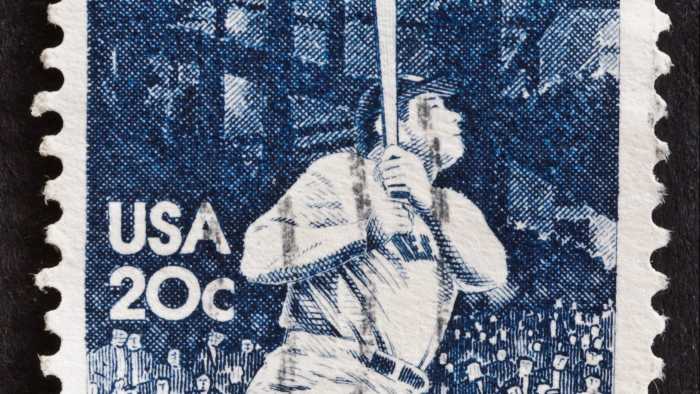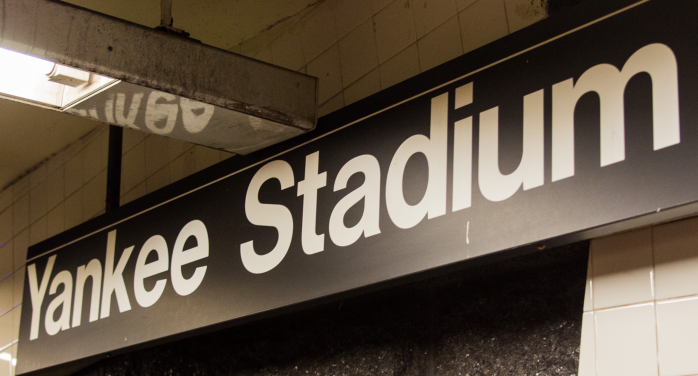BY Aline Reynolds
Technology teacher Renny Fong can’t get enough of his school’s new whiteboards. His elementary students at P.S. 130, the Hernando DeSoto School, can travel in real time using Google Earth to learn geography, and dissect frogs using Flash Interactive, right on a screen for the entire class to see.
“You have access to the world at your fingertips. It’s almost a magical feeling,” he said.
Fong is one of many Lower Manhattan teachers whose classroom practices have been transformed thanks to a one-time grant from the Lower Manhattan Development Corporation (LMDC).
Under the grant, 52 Downtown schools were given around $82,500 apiece for equipment and supplies. Schools below Houston Street now have some of the latest technological devices at their disposal.
Last year, the schools were given a list of 21 useful items from which to choose, ranging from digital projection screens (whiteboards) to computers to musical instruments. The schools applied for the equipment through the Department of Education and began receiving it in late 2009.
Many schools invested in whiteboards, interactive screens that work with computers. Also popular among the grant-offered items were special cameras to accompany the whiteboard.
“Thanks to this grant, we’re now part of the virtual cyber community,” said James Lee, Principal of the P.S. 20 Anna Silver School. “It’s a wonderful thing.”
Alice Horn, principal of P.S. 124 (The Yung Wing School), spent about $75,000 of the grant money on whiteboards for 16 of her classrooms. Horn’s goal is to supply all 48 classrooms with this interactive tool. “It’s far more engaging for the children,” she said.
The whiteboard turns reading into a group activity. “Students can read a book all together as the pages are turning on the screen,” Horn said.
P.S. 130 also invested its grant money in whiteboards. Thanks to previous grant money, 38 of the school’s 41 rooms are equipped with the devices, which can project Internet video footage and students’ writing assignments.
“Teachers can actually dissect a child’s writing right on the screen,” Lilly Woo, principal of P.S. 130, said.
The strong visual component of the interactive screen is a particular help to this school, where one quarter of its student body failed the English as a Second Language Achievement Test.
The whiteboard also allows teachers to digitally record the notes taken on the screen and send them to students that were absent from class.
Schools such as the Spruce Street School (P.S. 361) and Stuyvesant High School also purchased document cameras, supplements to the whiteboards used to replace the old-school overhead projectors and have the capability to display real-time images of written material to the class.
Some schools have invested in other resources across the curriculum. At P.S. 20, Principal Lee chose to spend nearly 20 percent of the sum on thought-provoking play equipment, such as puppet theaters, doctor’s kits and puzzles.
Ellen Darby, a teacher at P.S. 20, has witnessed the benefits of the extra play material for her kindergarten students.
“Their imagination is really blooming,” Darby said. “I see them talking more among each other, and they’re telling more stories in class.”
Darby added that enjoyable activities not only nurture children’s social skills but also help prepare them for the academic curriculum of upper grades.
“Playtime is their birthright, and it’s crucial to their overall development,” she said.
P.S. 20 also purchased special microscopes and hand-held lenses to enhance its science curriculum, transforming traditional science classrooms into working laboratories.
Stuyvesant High School, one of the top-ranking public high schools in the nation, devoted over half of its $82,500 on computers, desks and chairs for its Computer-Assisted Design (CAD) rooms. The remaining sum was spent on Promethean whiteboards and computers.
“We’ve been lagging behind in technology equipment for the longest time,” said Edward Wong, Assistant Principal of Technology Services at the high school, since the school’s high academic standing makes it ineligible for certain federal and state funds that are based on special education requirements.
In late 2007, the federal government gave $37 million to the LMDC for the economic and cultural development of the area surrounding Ground Zero. The LMDC Board, made up of government officials and community activists, decided to allocate $4.3 million of these funds towards resources for Lower Manhattan schools.
That number was originally $4.5 million, but $200,000 was used to cover the administrative costs of the program.
Fund for Public Schools, a nonprofit organization that raises money for the Department of Education, distributed money equally among the Downtown schools. By financing school equipment and supplies, the grant money makes money available for other items in the budget.
“The grants frees me up to allocate my [school budget] money towards things that we really need, like hiring more staff and buying more books,” Spruce Street School principal Nancy Harris said.































